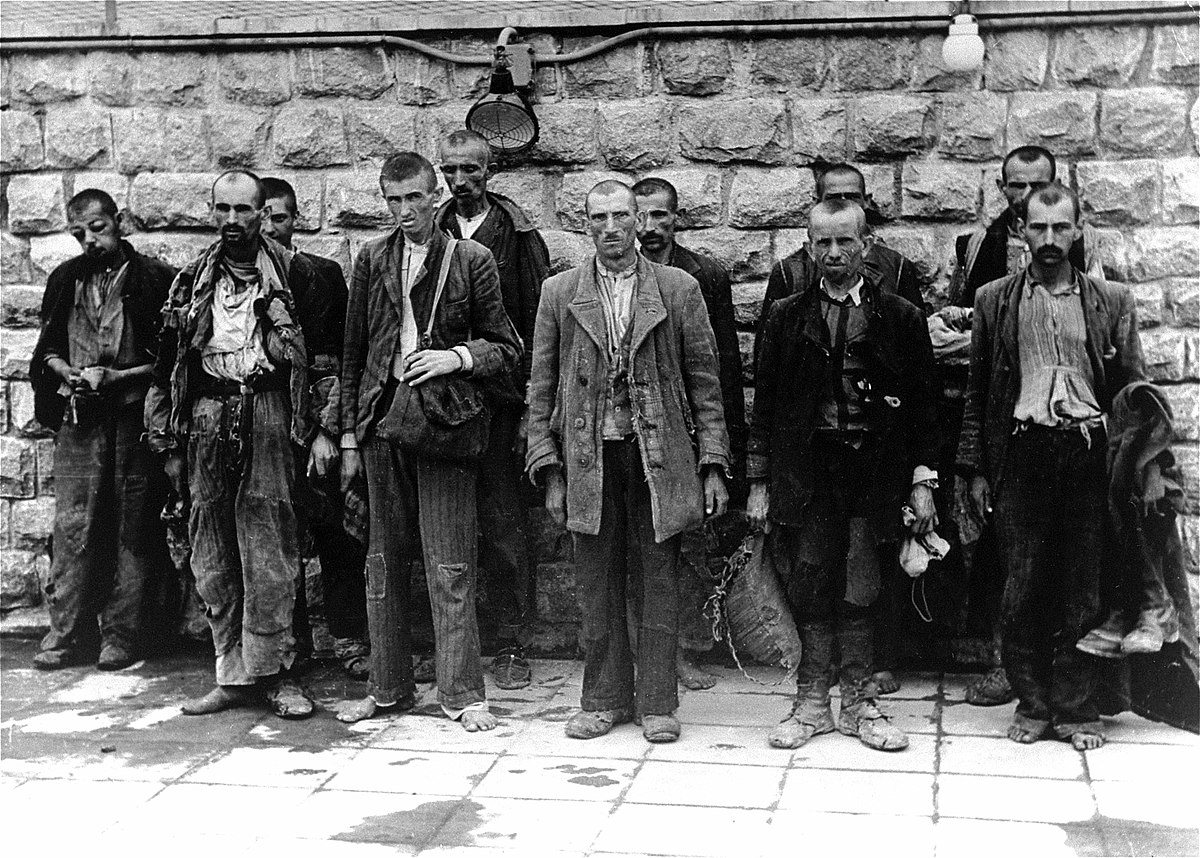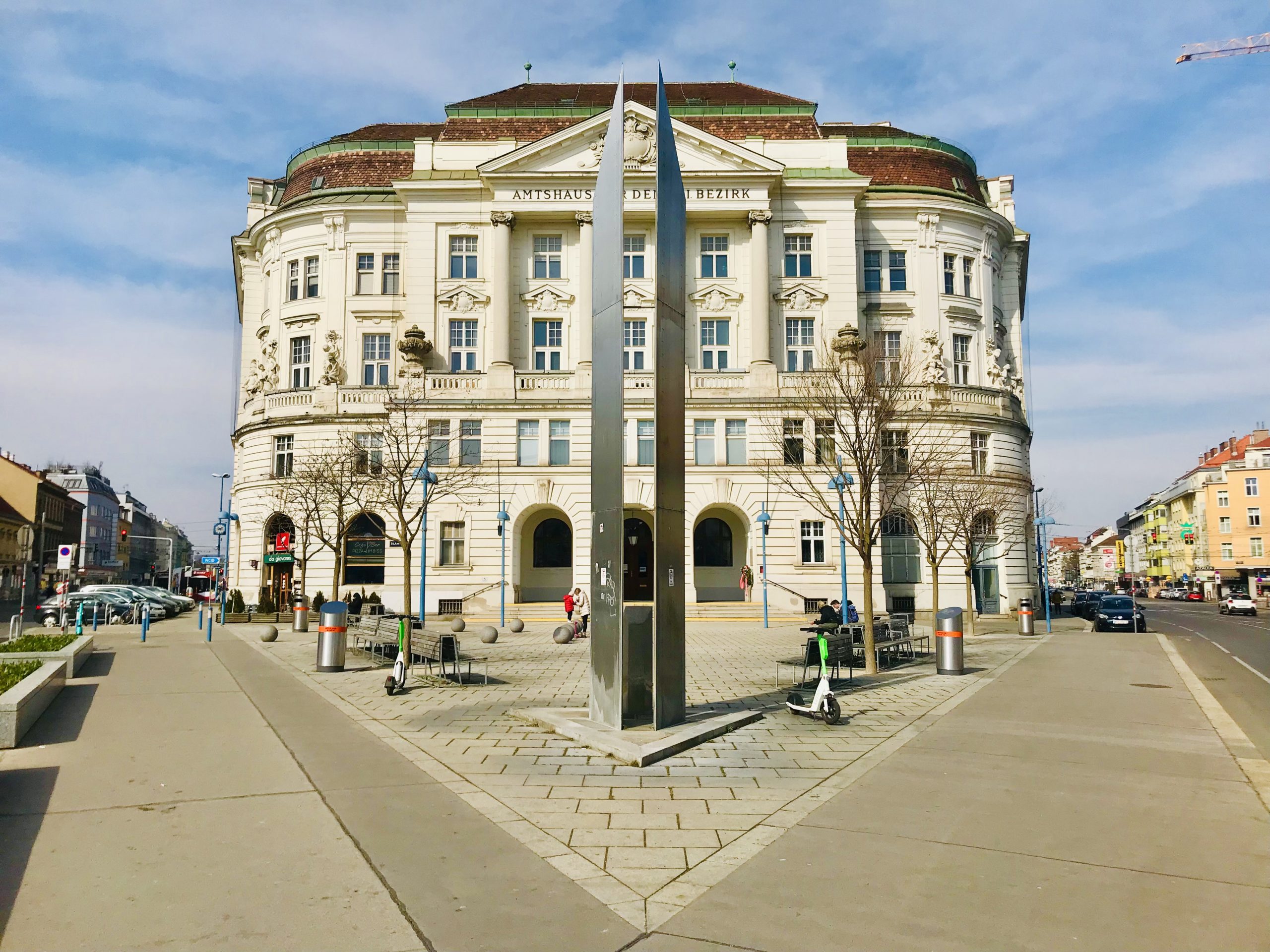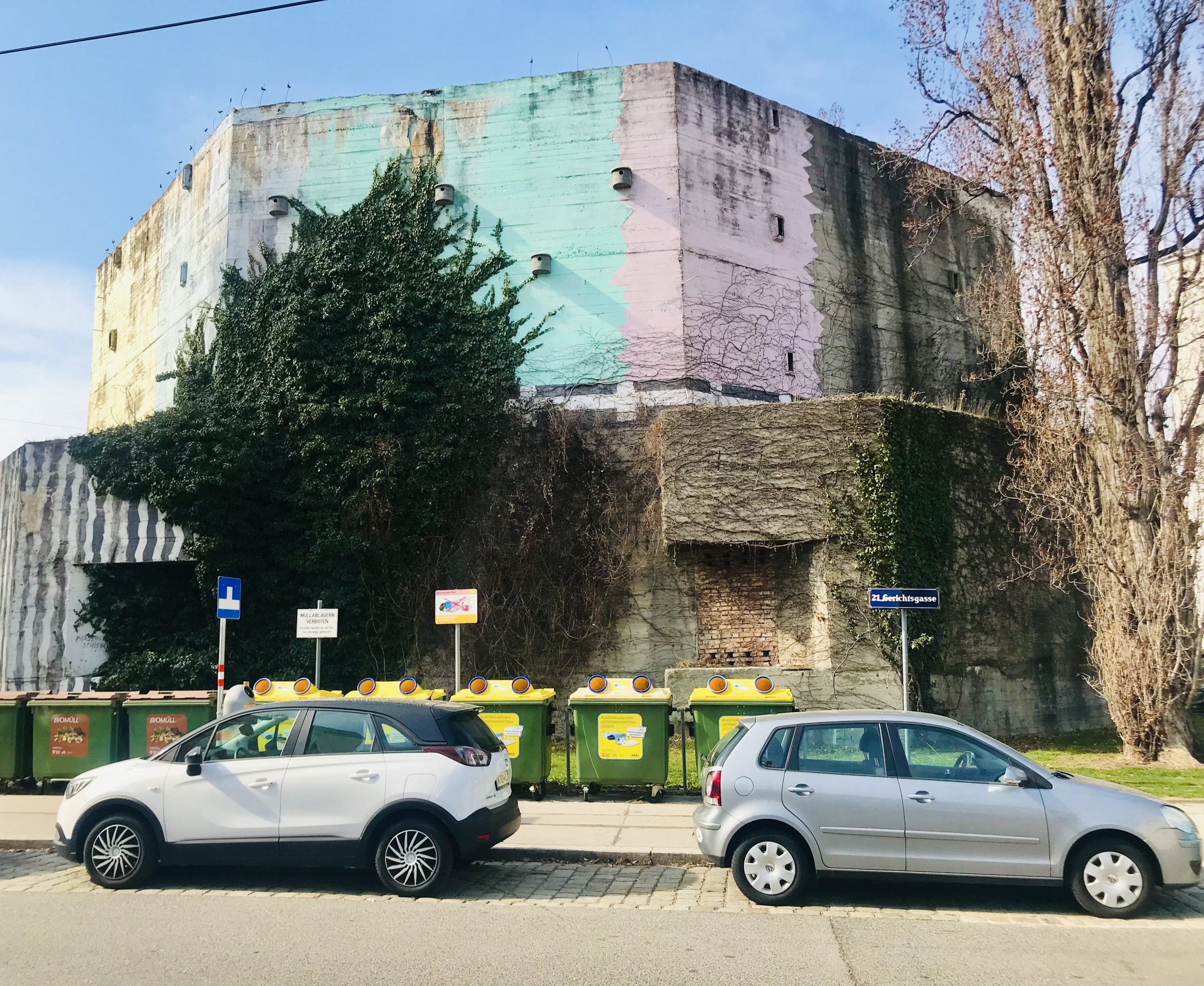
RASTOKE VILLAGE IS A SPECTACULAR WATERMILL TOWN WITH CASCADING WATERFALLS RUNNING OVER IT, AROUND IT, AND THROUGH IT
Table of Contents
The Rastoke village conjures up images of Smaug the Dragon and Lake-town (also known as Esgaroth to Tolkien megafans). Lake-town was built on the waters of the Long Lake, south of the Lonely Mountain, in The Hobbit. That said, whereas Lake-town was the final resting place of the Dragon Smaug, no dragons are known to exist in Rastoke (that we are aware of).
RASTOKE VILLAGE AKA THE SMALL LAKES OF PLITVICE
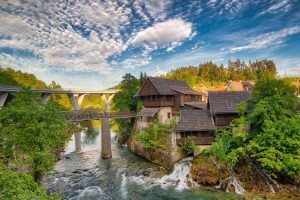 wikimedia commons
wikimedia commons
Rastoke village is often referred to as the “Small Lakes of Plitvice” as it has the same occurring natural phenomena of Plitvice Lakes National Park — namely, water rushing through, over and around porous limestone (referred to as travertine) in the form of 23 waterfalls. A result of its isolation, Rastoke remained a well-kept secret for centuries. I n fact, during medieval times, the region around Rastoke was described as terra nullius” or “no man’s land” — the questionable border between Europe and the Ottoman Empire. It wasn’t until 1860 that Rastoke was “discovered.” Rastoke was then described as follows:
“The surroundings of Slunj are downright romantic. They are crowned by the magnificent waterfalls of the Slunjčica river by which even not outspoken nature lovers will be captivated.”
A BRIEF HISTORY OF RASTOKE VILLAGE
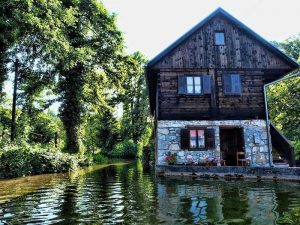 wikimedia commons
wikimedia commons
First mentioned in 1689, Rastoke village is a historic mill town in Rastoke-Slunj constructed on a number of islands at the confluence of the Slunjčica and Korana rivers. Rastoke village was known for its water-powered mills driven by horizontally aligned paddle wheels. In its heyday, the village operated 22 mills. Each mill had several millstones used to grind “black corn” — a mix of maize, rye, barley, millet and oats. This concoction was used to make Rastoke bread (rastočki domaći kruh) which was famous throughout Croatia.
The best millstones were used to grind “white corn” or wheat. In a medieval game of cat and mouse — since milling fees were 8-10 percent of the delivered amount of corn — farmers often attempted to conceal the quantity of corn they delivered.
ON THE RIVER
The people of Rastoke also took advantage of their position in the middle of the river to wash their clothing. They used large wooden rotating barrels with holes (similar to the drum inside a modern-day washing machine). These ancient washing machines are still visible today along the banks of the river.
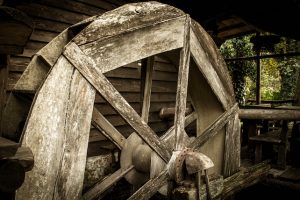 wikimedia commons
wikimedia commons
WAR COMES TO RASTOKE VILLAGE
Sadly, during 1991-1995, many century-old houses were partly destroyed as a result of the Serbo-Croatian War. The Serbian paramilitary attempted to destroy a nearby bridge and destroyed most of Rastoke’s rooftops in the process. Local Serbian militias, who regarded Slunj as their home region, occupied the village of Rastoke during the conflict. Clearly not the sharpest knives in the drawer, these men severely damaged Rastoke’s main waterfall after they tossed explosives into it.
UNESCO WORLD HERITAGE SITE
In 1969, Rastoke was put under national monument protection. Personally, we think Rastoke village would make an excellent UNESCO World Heritage Site. Once you visit, we are sure you will agree.
OUR EXPERIENCE VISITING RASTOKE VILLAGE
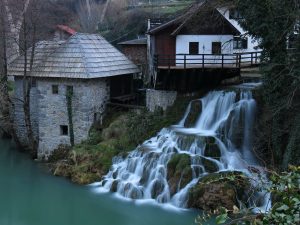 wikimedia commons
wikimedia commons
Rastoke village is truly unique — we have never experienced anything quite like this or even comparable. One could easily pass by this must-see destination unless of course, they are a savvy traveller and who has read this article. Rastoke is located at a mega sharp 45-degree hairpin turn off just before the main bridge that crosses the Slunjčica River. There are signs posted but you need to have an eagle eye. (Its a good thing we have provided you with a link to Google Maps.)
Rastoke proper is mainly a pedestrian area. We parked our vehicle and then walked several hundred feet downhill (along an easily accessible paved road) to the village center. Visitors to Rastoke will immediately notice that everything is built on the water — EVERYTHING. In fact, one smaller island contained nothing but a lovely solitary park bench reachable only by footbridge. The village is a mix of houses, footbridges, and restaurants built on a landscape of rushing water and waterfalls.
We had an amazing lunch at the Petro-Rastoke restaurant, which we highly recommend. Since the waters of the Slunjčica river actually rush under the restaurant, they have their own trout farm on the property and feature fresh grilled trout served to your table. After we departed the restaurant, we took a leisurely walk down to the river along one of the two main roads in Rastoke village. We passed several more historic mills and a grand waterfall near the river’s edge.
During the next two hours, we explored the rest of Rastoke village. We walked slowly at the risk of missing something. At the end of the day, we crossed the bridge over the Slunjčica river thinking we would get a better view of the village. Surprisingly, the best views were in the village itself.
The village of Rastoke is a magical place and is truly unique. It is an off-off the beaten path place well worth visiting.
PRO TIPS FOR VISITING RASTOKE VILLAGE
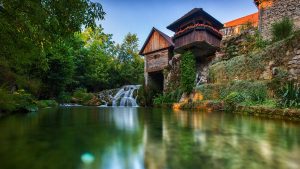 wikimedia commons
wikimedia commons
PRO TIP 1 – VERY IMPORTANT. Rastoke is an incredibly unique place best explored on foot. For the most part, the village is easily accessible via the paved paths and footbridges. Don’t just stay in your car – walk around.
PRO TIP 2. Although there are other taverns and restaurants, the central part of Rastoke is near the Petro-Rastoke restaurant. The opposite side of the village had several guest houses. There were two major restaurants — Petro Rastoke and Konoba Pod Rastockim Krovom. We chose Petro Rastoke and were not disappointed.
We later stopped by the Konoba restaurant to see their private garden; however, the attendant at the ticket booth was so unfriendly and unhelpful that we decided to cut our losses — which was unfortunate. Although the waterfalls in the Konoba garden are undoubtedly beautiful, visitors can enjoy them for free simply by walking around the village.
PRO TIP 3. In 1962, a German production company, Rialto film, shot their first western, The Treasure of Silver Lake in Rastoke and at the Plitvice Lakes National Park. After completing the movie, the German production company left a totem pole used on the movie set in Rastoke. Visitors to Rastoke can find the totem pole at the Holjevac House. Of note, two sides of the totem pole have Croatian artwork.
PRO TIP 4. It is definitely worth exploring all the nooks and crannies of this charming rustic village as there are interesting sights at every turn — keep your camera ready.
NEAR THIS PLACE
TRAVEL GUIDE | PLITVICE LAKES NATIONAL PARK. A UNESCO World Heritage Site, the Plitvice Lakes National Park is an exceptional, must-see destination. The Garden of Eden truly does exist in Croatia.
KUTEREVO BEAR REFUGE. Far off the beaten path, tucked away on the fringes of the Velebit National Park in Croatia, lies the Kuterevo Bear Sanctuary, a refuge for brown bears. Difficult to find but well worth it — an unforgettable experience. ADDRESS: 53220, Kuterevo, Croatia.
KAYAKING. Enjoy all the pleasures of a 3-hour river kayak trip without battling against the current on the way back on this self-guided adventure that includes vehicle transfers back to the starting point. Marvel at the underwater life of the spectacular Gacka River through your transparent kayak as you paddle 5 miles (8 kilometers) through tranquil landscapes. ADDRESS: Unnamed Road, 53220, Prozor, Croatia.
WAR TORN VILLAGES FROM THE SERBO-CROATIAN WAR ROAD. The mountains and farm fields to the north of Route 52 from Plitvice to Otočac were once a battlefield with fighter jets dropping bombs on the neighboring villages and snipers shooting their targets from their perches in claimed buildings. Everywhere you look, the bombed-out and bullet-riddled towns serve as a sober reminder of this horrific unnecessary conflict.
BEST PLACES TO STAY
APARTMANI BURIC. Shhhhhh……. Upscale lodging with spacious apartments and incredible hospitality in the middle of rural Croatia. Excellent breakfast. The only true 4-star lodging in the area. Located minutes from the Plitvice Lakes National Park. ADDRESS: Selište Drežničko 100, 47246 Seliste Dreznicko, Croatia.
MOBILE HOMES CAMPING PLITVICE. Shhhhhh……. Yes, this is a 5-star mobile home lodging option and it is wonderful. Modern, contemporary units with hardwood floors and air conditioning, outdoor pool, fitness center, buffet breakfast, and FREE Wifi. Located meters away from the Plitvice Lakes National Park. ADDRESS: Smoljanac, 53231 Plitvička Jezera, Croatia.
BOOKSHELF
The Hobbit (There and back again) by J.R.R. Tolkien
FILM + TV
The Hobbit: An Unexpected Journey
RESOURCES
Rastoke Tourist Information Center
![]()




